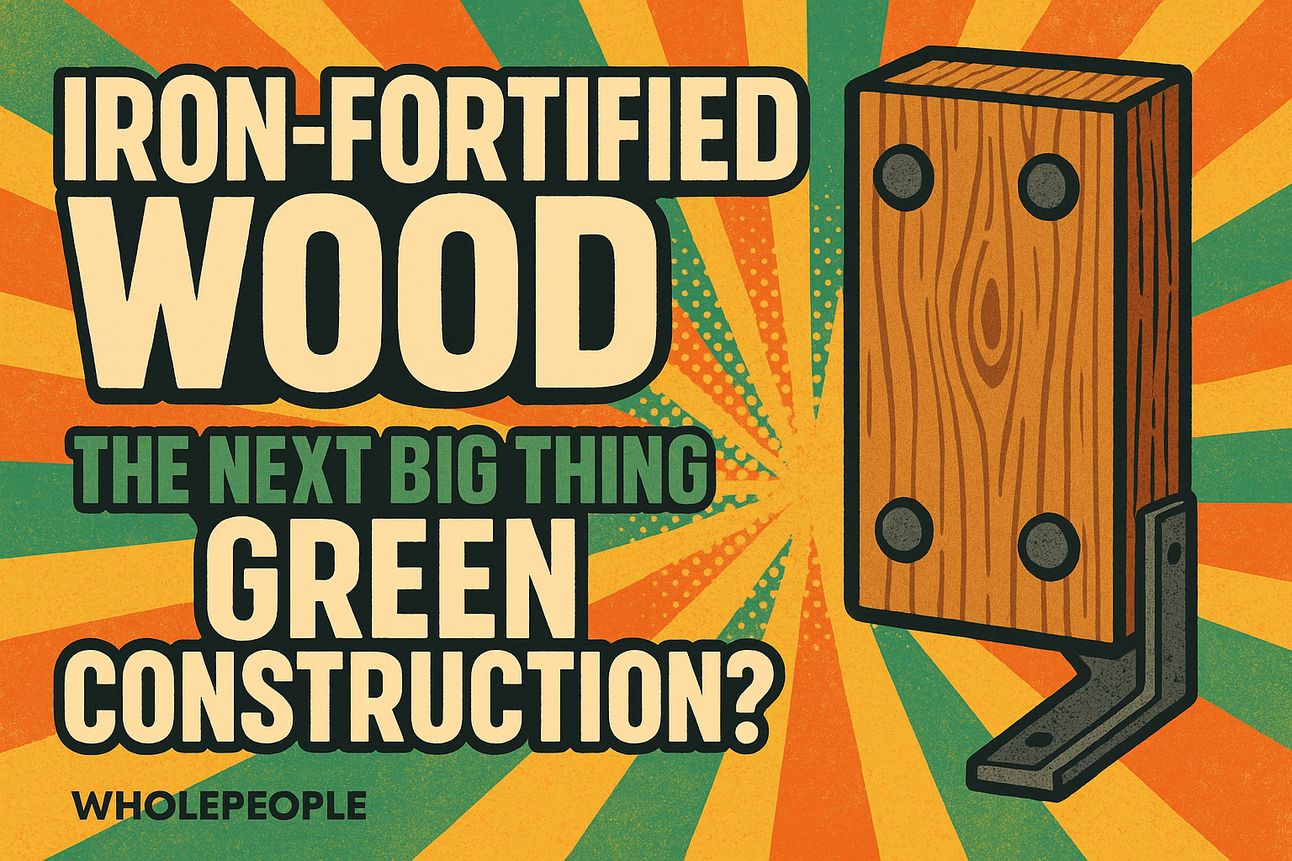What do you get when you combine renewable timber with the strength of metal? A breakthrough building material that could help decarbonize construction.
Concrete and steel may build our cities, but they also build up our emissions—accounting for nearly a third of global construction-related CO₂. That’s why scientists are looking to a surprising hybrid: wood enhanced with iron.
In a clever new twist on sustainable engineering, researchers have developed a way to infuse wood with microscopic particles of iron oxide, creating a material that’s stronger, more fire-resistant, and even electrically conductive—without losing its renewable edge.
How It Works
🧪 Scientists begin with softwood, then chemically treat it to remove lignin (the compound that makes it rigid and brown). This leaves behind a spongy cellulose scaffold.
🔩 They then soak the wood in iron salt solutions, where it binds with the cellulose to create an iron-infused framework.
🔥 Bonus: The resulting material is not only stronger, but also far more fire-resistant—a key hurdle for using wood in larger buildings.
💡 Oh, and it conducts electricity, opening the door to smart wood in future buildings.
Why It Matters
🌿 Decarbonizing the Built Environment – The construction sector is a climate heavyweight. Replacing high-carbon materials with engineered wood products could slash emissions across skylines and suburbs.
🏗️ Super Timber, Scaled Up – Iron-infused wood could meet the structural demands of taller buildings, bridges, and even electrical infrastructure—all while remaining renewable.
🛠️ Safer, Smarter Structures – Fire resistance is a big win. So is the potential for embedded electronics, sensors, or lightning protection in building materials.
♻️ Sustainable to the Core – The process enhances wood without turning it into plastic or cement, preserving the carbon-storing, biodegradable magic of timber.
The Future of Construction?
This isn't a mass-market product yet—but researchers are already imagining skyscrapers with ironwood beams, self-heating smart walls, and disaster-resistant structures that store carbon instead of spewing it.
Wood may be ancient, but it's proving future-ready—especially when it hits the gym and picks up some iron.

